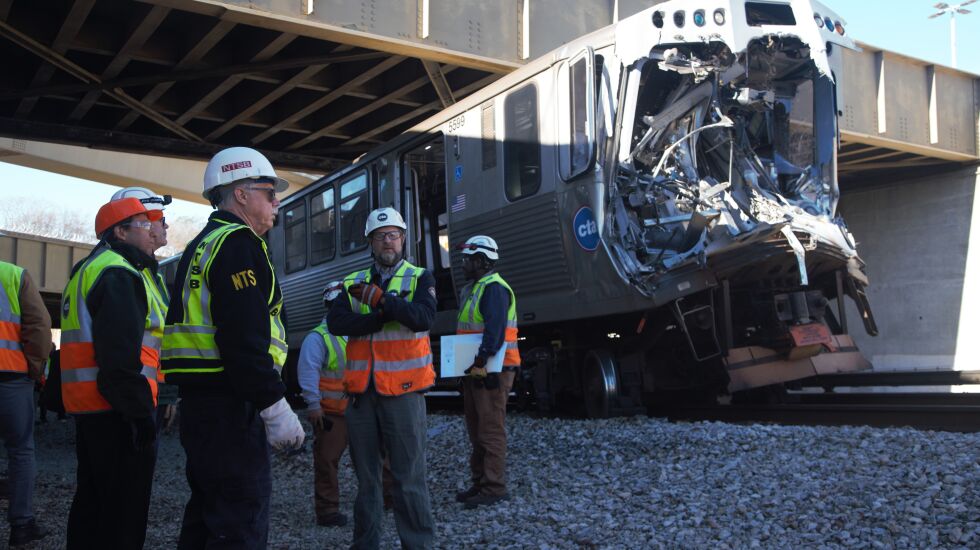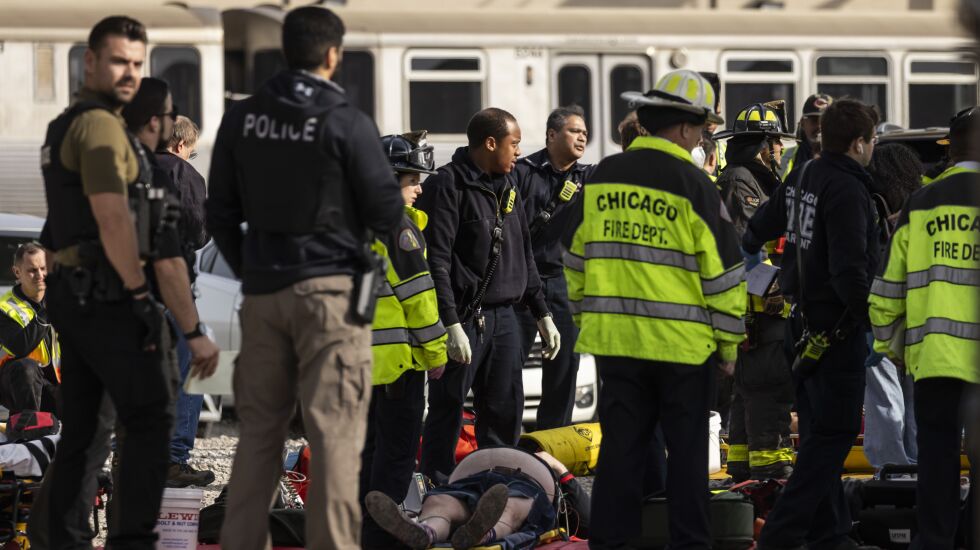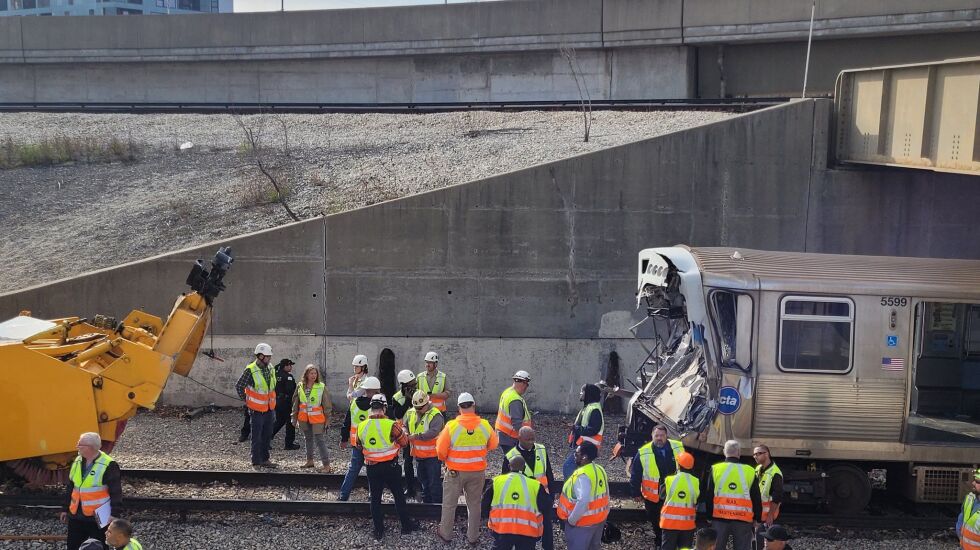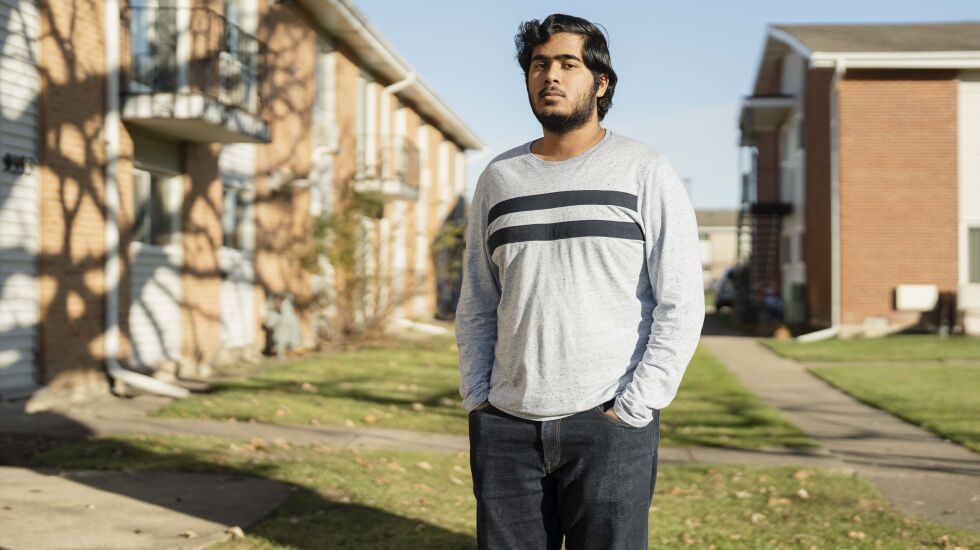
The National Transportation Safety Board this weekend provided the first hints into what caused a CTA Yellow Line train to collide with a snow plow at nearly 30 mph near the Howard station on Thursday.
The operator needed more time to brake than the train was designed for, and the train’s wheels slipped due to residue on the tracks, the NTSB said Saturday.
But passengers and a transportation expert question the role of potential human error, including why the train was on the same track as a snow plow being used to train CTA employees.
“It never should have happened,” said Stephen Helmer, who was on the train with his daughter and two grandchildren.
“We want answers to why it was on the same track at the same time and place where there were commuters,” he said.

NTSB board chair Jennifer Homendy told reporters Saturday the operator appeared not to be distracted, but she did not address the main question of why the train and plow were sharing the same track.
Although the NTSB’s full report may take months to complete, several key questions remain.
One is whether the operator ran through a signal or if there was a stop signal at all, said Joseph Schwieterman, professor of transportation at DePaul University.
There’s also the question of whether the conductor was alerted to the presence of the snow plow.
“Usually, there’s enough clearance, you wouldn’t have two trains in the same signal block,” Schwieterman said.
Regarding the stopping distance, he said he was surprised the CTA is just now learning that its trains require more distance to stop than previously thought.

The CTA specified the train should have been able to stop in 1,780 feet, but the NTSB found it needed 2,745 feet to stop. The CTA was using typical stopping distances for older-model L trains that don’t reflect the newer, heavier L cars, Homendy said.
From investigating the crash, the CTA may learn of the risks of residue on tracks, Schwieterman said. Just as buses and cars operating during rain require greater distances to stop, so too would train operators need to factor in slippery tracks.
The CTA may also need to reevaluate its use of work equipment during daytime hours because it increases the risk to commuters, Schwieterman said.
Helmer’s daughter Margaret Costello, who was also on the train with her 2-year-old twins, said she’s upset the CTA did not implement an automatic brake system that was recommended by the NTSB more than a decade ago.

“This seems like something that was going to happen — and still this was allowed to happen,” Costello said.
The NTSB recommended positive train control for all train systems nationally in 2009.
Positive train control can track every train in operation on tracks. It’s designed to automatically stop a train if an operator runs a signal or slow it down if it’s moving too fast.
The agency recommended the CTA install the technology in 2014 after a Blue Line train crashed into the terminal at O’Hare International Airport. But the CTA was not required to install the technology because it’s exempted from the type of federal oversight given to Metra and Amtrak.
The CTA did not answer detailed questions about the incident for this story.
“CTA continues to work closely with the NTSB in their investigation,” the transit agency said in a statement. “We will continue to cooperate fully with the NTSB in its investigation process, which is still ongoing. As the NTSB chair said yesterday, there are no safety concerns about taking the train.”
The NTSB did not immediately reply to a request for comment.
Alishan Zaidi, who was in the lead car that crashed, said he believes the theory that the train’s wheels lost traction on slippery tracks.
After the train crashed, he said he witnessed the conductor unpin himself and say the brakes failed to stop the train.
“He said it was supposed to stop but didn’t,” Zaidi said.

Zaidi, 19, of Des Plaines, a DePaul health sciences student, recalls a two- to three-second gap between when the brakes were activated and the collision occurred.
“I heard the brake being pulled, then I heard the screech of the brake being heavily pulled. I said, ‘That was weird, I never heard this before.’ Everyone was in shock,” he said.
Zaidi is more cautious about riding L trains since the crash. He would try another method of travel, but he says, “I don’t have much of a choice.”
The afternoon after the crash, he had to take a Red Line train back north from school downtown. That time, he said, he chose a middle train car and braced his body in case of another sudden stop.
“I was uncomfortable with the noises I used to hear,” he said. “You hear the screeching normally, but I still braced myself.”
The Yellow Line service remains suspended.
Contributing: Rosemary Sobol
!["[T]he First and Fifth Amendments Require ICE to Provide Information About the Whereabouts of a Detained Person"](https://images.inkl.com/s3/publisher/cover/212/reason-cover.png?w=600)






